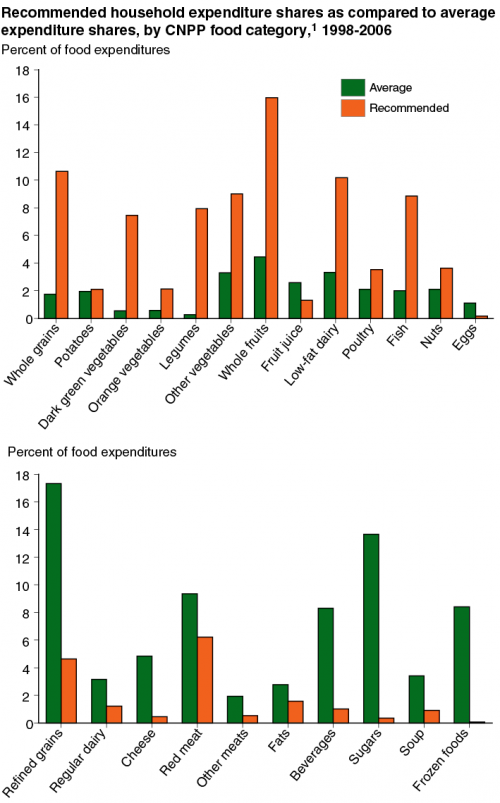My first-Sunday-of-the-month San Francisco Chronicle Q and A column, Food Matters, is out. This month it’s about figuring out what “whole wheat” labels mean on food packages.
Q: I pay $4 for multigrain or whole wheat breads because I’ve heard white bread isn’t as healthy. But when I compare nutrition labels, $2 white breads look much the same. Are they?
A: My Talmudic answer: yes and no. You are asking about commercial sliced breads. Bread may be the staff of life, but you would never know it from reading the ingredient lists of most commercial products.
Commercial breads are indeed much the same, with only a few differences that matter.
To decide whether these have anything in them worth eating beyond their calories, you must inspect labels to make sure the first ingredient is whole grain, the total number of ingredients is small and devoid of unpronounceable chemicals, the fiber content is at least 2 grams per 1-ounce serving and the label says 100 percent whole wheat. Anything less is reconstituted white bread with occasional pieces of the original grain added back.
And then there is taste. Artisanal breads begin with just four ingredients – flour, water, salt and yeast – and turn them into loaves so crusty, chewy and fragrant that you cannot stop eating them. If they have some whole grain in them, even better.
But handmade breads take forever to make and quickly go stale. Commercial bakeries deal with these problems by rushing the bread-making process and compensate for the loss of flavor by adding stabilizers, dough softeners and preservatives, and covering up the chemical tastes with sweeteners. Breads with 30 or more ingredients are not unusual and violate my rule: Never buy processed foods with more than five ingredients.
To compare breads, you must read labels. Bread companies do not make this easy. Some list the serving size as one slice, some two, and their weights can vary by twofold. When you convert everything to ounces, the nutrient content of supermarket breads looks much alike.
An ounce provides 70 to 80 calories, a trivial difference. The grain is what counts.
Wheat grains have three components – the nutrient-rich bran and germ (“chaff”), and the endosperm, which is mostly starch and protein. One hundred percent whole wheat flour contains all three in the same proportion as in the original grains.
White flour contains about 80 percent of the original components. It is mostly endosperm.
Nutrients in the chaff are lost, so bakers are required to replace the five nutrients least likely to be available from other foods: niacin, riboflavin, thiamin, folic acid and iron. The others are not replaced.
Neither is fiber. White flour contains only trace amounts of fiber.
Because high-fiber diets promote healthy bowel function and appear to reduce risks of heart disease and bowel cancers, dietary advice is to eat at least three daily servings of whole grains – 3 ounces of 100 percent whole wheat bread, for example.
Food labeling rules do not make it easy to figure out fiber content. Some white breads list 1 gram of fiber, but watch out for serving size. It takes two slices to reach half a gram, which can be rounded up to 1.
Whole wheat bread with 2 grams of fiber per 1-ounce slice may have four times as much fiber as white breads. But watch out for breads listing 3 grams fiber; their slices may weigh nearly 2 ounces.
In response to dietary advice, commercial bakeries have introduced whole grain breads acceptable to white bread eaters. These grind the wheat bran super fine, add extra dough conditioners to keep the bread soft, and toss in some bran or cracked wheat to make the bread look like whole wheat. Check for fiber grams and the position of chaff ingredients on the list. The further down the list, the smaller their contribution.
And where is the Food and Drug Administration to help with whole grains? Alas, the FDA has not set rules for grain content. It permits manufacturers to make statements such as “100 percent whole grain” as long as the statement is true and does not imply that the food is an “excellent source.”
The FDA’s nonbinding guidance says anything labeled “100 percent whole grain” must contain all three components of the original wheat seed, in proportion.
This regulatory gap permitted creation of the industry-sponsored Whole Grain Council. The council issues a certifying stamp in two forms: 100 percent and Basic. One hundred percent means all grains are whole. But the more prevalent Basic stamp allows refined grains and disproportionate additions of bran or germ.
This article appeared on page K – 3 of the San Francisco Chronicle.
Note: E-mail your questions to food@sfchronicle.com, with “Marion Nestle” in the subject line. Read previous columns at sfgate.com/food.



